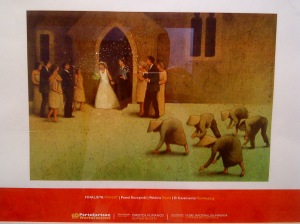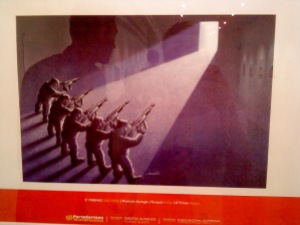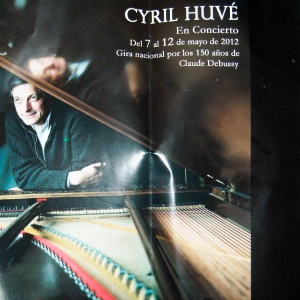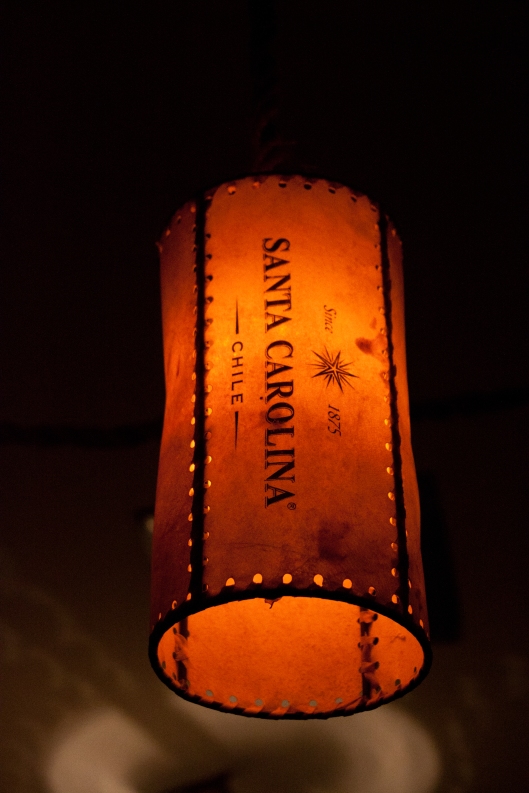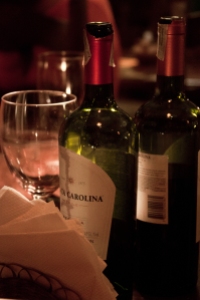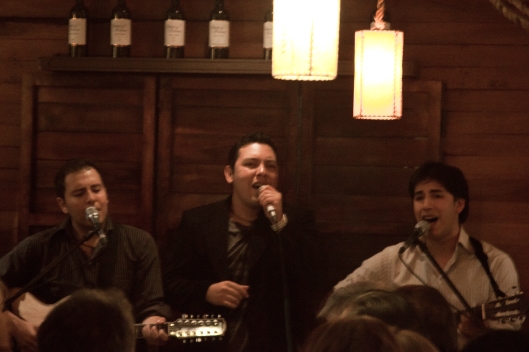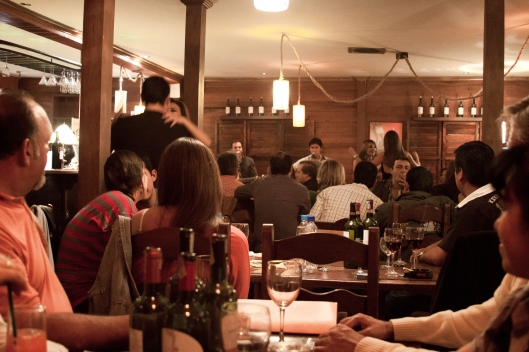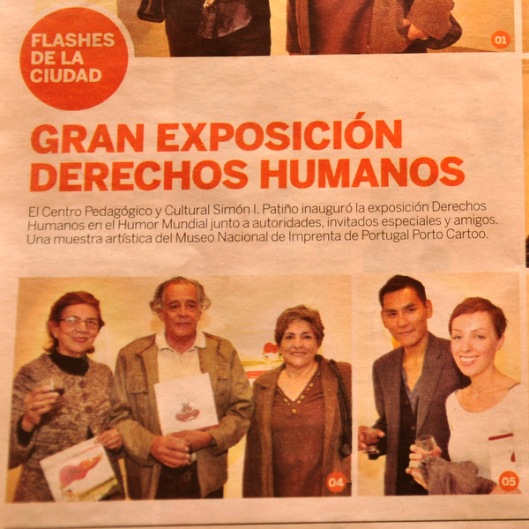Jestem chyba jedna z nielicznych osob, ktore nienawidza zakupow. Powodow jest wiele, ale najwazniejszy to taki, ze nie stac mnie na rzeczy, ktore mi sie podobaja, a tym na ktore mnie stac, zawsze czegos brakuje. Z tego tez wzgledu uwazam lazenie po sklepach za strate czasu – wolalabym w tym czasie zrobic cos innego, chociazby ‘nic’. Oczywiscie, zdazaja sie okazje, kiedy jestem zmuszona zakupic stroj na jakas okazje, ale przewaznie konczy sie to zalamaniem nerwowym polaczonym z fizycznym wyczerpaniem i dziura w portfelu…. Wyjatki od tej zasady zdarzaja sie sporadycznie – kiedy uda mi sie upolowac jakas okazje, albo kiedy kupie cos za grosze, wiec nie jest mi zal, nawet jezeli pozniej zakup okaze sie nietrafiony.
Do Boliwii jechalam z przekonaniem, ze wszystko jest tam tanie i czesto lepsze niz w Europie. Dlatego tez nie bylo mi zal zostawic wiekszosci moich ubran, butow i kosmetykow w Dublinie – w koncu, pomyslalam, moge to kupic na miejscu i do tego taniej!
Ha! Jestem tu juz trzeci tydzien i w ciagu tego czasu pralam swoje jedyne szorty juz kilka razy…
Co prawda, Cochabamba pelna jest markowych sklepow, malych butikow, dziala tu supermarket IC Norte i Hipermaxi, ale wszystko to na wzor (polnocno) amerykanski – z cenami wlacznie.
Na przyklad: na dole naszego apartamentowca znajduje sie ‘Home Store’, ktorego wlascicielem jest znajomy rodziny. Na poczatku naszego pobytu okazalo sie, ze potrzebujemy recznikow, a ze w owym sklepie mozna bylo je dostac po znajomosci – byl to nasz pierwszy wybor. Zeszlismy wiec wszyscy na dol i pomimo sjesty, wprowadzono nas przez zaplecze do przestronnego i pieknie pachnacego swiezoscia sklepu. Reczniki w nim byly, a jakze! Piekne, miekkie, grube, ktore mialy nas kosztowac $20 za komplet. A tu zonk! Dwadziescia dolarow to kosztowal komplecik malutkich reczniczkow do twarzy, a za jeden recznik kapielowy zyczono sobie $15! Jak to uslyszelismy, miny nam zrzedly, ale jak juz obiecalo sie koledze, to trzeba bylo zacisnac zeby i placic. Kupilismy tylko dwa.
Po doswiadczeniu z recznikami zastanawialam sie, jak Boliwijczycy moga sobie na cokolwiek pozwolic?
Otoz, ‘przecietni ludzie’ kupuja w ‘La Cancha’. Jest to ogromny bazar, ktory zajmuje kilka ulic w biedniejszej dzielnicy miasta (niedaleko stad do dworca autobusowego i kolejowego). Lepsze sklepy mieszcza sie w budynkach, jednak wiekszosc artykulow znajduje sie pod prymitywnymi kramikami, sklecionymi z drewna i plotna.
Kupic tu mozna doslownie wszystko, a co najlepsze, panuje tu pewna organizacja! A wiec kramy z artykulami kuchennymi na poczatku, pozniej ubrania, buty; elektronike mozna zakupic juz pod dachem, w calkiem przyzwoitych sklepikach. Dalej – kosmetyki, plyty DVD (oczywiscie pirackie), zywnosc, i najlepsza czesc bazaru zwana – ‘Zona Artesana’ – z przepieknym tradycyjnym rekodzielem.
Swoja droga, od czasu przybycia do Cochabamby, zastanawial mnie brak rekodziela na ulicach miasta – wszedzie chinskie badziewie! Bylo co prawda jedno stoisko na ‘Mercado America’, gdzie kupilam ladna torbe za €4, ale to wszystko. Kiedy dotarlam wiec tej do najpiekniejszej czesci ‘La Cancha’, dostalam prawdziwego oczoplasu.
Ceny na bazarze?
Coz, znow sie zawiodlam. Ubrania, made in China, kosztuja tyle ile u nas na rynku w Kwidzynie. Japonki z Brazylii – od €3 (zaleznie od wzoru). Krem Nivea Visage – okolo €7, balsam do ciala Nivea €4 itp. Telewizory plazmowe czy LCD (dla mnie to bez roznicy) od €200 za marke mi nie znana, do ponad €500 za Samsunga/32 cale. Niemal tyle samo co w tutejszych sklepach.
Na czym wiec mozna zaoszczedzic?
Otoz, na jedzeniu. Moj Freddy wlasnie wrocil z bazaru ‘America’ z dwiema duzymi torbami pelnymi owocow (banany, mandarynki, pomarancze itp.) za €4! Jak juz wczesniej pisalam, restauracje sa tu bardzo popularne, bo nieraz taniej (i prosciej) jest zjesc na miescie, niz gotowac w domu. Rodzina Freddiego w kazda niedziele spotyka sie w jednej z wielu drogich restauracji na obiedzie – w Polsce bylby to niemaly uszczerbek w domowym budzecie!
Niestety, na bazarze nie dostanie sie wszystkiego… A tak nam tu teskno za sniadaniowym Weetabix czy mietowa herbata. Produktow importowanych nalezy wiec szukac w IC Norte – supermarkecie. Pamietam nasze pierwsze zakupy po przyjezdzie – za produkty ‘pierwszej potrzeby’ zaplacilismy ponad €100!!!!
Niestety, to wlasnie w supermarkecie mozna dostac najlepsze mieso, wedliny i sery (czytaj: najbardziej higieniczne). Dzis poszlismy do miejscowego masarniczego, gdzie za 8 nozek kurczaka zaplacilismy €1.60, ale skad te nozki pochodzily, jak byly przechowywane (na pewno nie w lodowce) i ile osob je dotykalo – lepiej nie wiedziec.
(Tak na marginesie – jestesmy po obiedzie i jeszcze zyjemy:)
Co jeszcze oprocz drogich butikow, supermarketu, malych obskurnych sklepikow czy ‘Kanci’ oferuje zakupowiczom Cochabamba?
Coroczne Targi Miedzynarodowe – ‘La Feria’. Jako, ze targi odbywaja sie pod koniec kwietnia i na poczatku maja, mielismy to ‘sczescie’, ze sie zalapalismy. Prawde mowiac bylam w takim miejscu po raz pierwszy, wiec mialam nadzieje na specjalne okazje, darmowe probki, szczegolnie, ze trzeba bylo placic za wstep. A tu zonk:)Jedyne, co zakupilam to sloiczek miodu (inny niz tatowy, ale calkiem dobry). Reszta materialu wystawienniczego (sprzet przemyslowy, samochody, telefony, ubrania, meble) malo mnie obeszla (moze poza niemiecka kielbasa i kapusta kiszona, ktorej i tak nie moglam jesc, bo bylam w trakcie zatrucia pokarmowego).
Co ciekawe, targi codziennie przyciagaly setki ludzi, zwabionych nowosciami, rozrywka, pieknymi hostessami, jedzeniem.
Wlasnie, hostessy – targi sa szansa dla mlodych i pieknych do zarobienia sporych pieniedzy. Za 11 dni pracy podobno placono nawet do $2000! Niezle, szczegolnie gdy porowna sie to z pensja nauczyciela w szkole miedzynarodowej, ktora wynosi $600 na miesiac. W takich okolicznosciach przydaloby sie znac hiszpanski, miec 2 metry wzrostu, dlugie wlosy i nogi do szyi…
***
I am probably one of the few people who hate shopping. There are many reasons, but most important is that I can’t afford the things that I like, and what I can afford is always lacking something. That’s why I believe shopping is a waste of time – I would rather do something else, even ‘nothing’. Of course, there are times when I am forced to buy some sort of dress for the occasion but usually I end up with a nervous breakdown, combined with physical exhaustion and a hole in my wallet … Exceptions to this rule occur occasionally – when I can hunt down some sales, or when I buy a pile of t-shirts in ‘Pennys’ for the next to nothing, so I do not suffer, even if the purchase turns out later to be bad.
I traveled to Bolivia with the conviction that everything is cheap and often better than in Europe. That is why I wasn’t very sorry to leave almost all of my clothes, shoes and cosmetics in Dublin – in the end, I thought, I will buy everything on the spot and cheaper!
Ha! This is my third week here, and I have had to wash my only shorts several times …
Although Cochabamba is full of designer shops, small boutiques and supermarkets all of them RE based on (Northern) American model. Together with prices.
For example: at the bottom of our apartment buildning there is a ‘Home Store’ owned by a family’s friend. At the beginning of our stay we needed some towels and because in that store we could get them maybe cheaper – it was our first choice. So we went downstairs and despite the siesta, we were let into spacious and beautifully scented store. We found our towels – soft, thick, which should cost us $ 20 per set. Yeap. Twenty dollars was for a set of tiny face cloths, and one bath towel costs $ 15! But, as was promised to a friend, we had to buy some.
After experience with towels I was wondering how Bolivians can afford anything?
Well, ‘ordinary people’ buy in ‘La Cancha‘. It is a huge bazaar, which occupies several streets in the poorer part of town (close to the bus and train station). Better shops are located in the buildings, but most of the articles can be found under primitive shelters, made of wood and canvas.
Here you can buy literally averything, and best of all, there is some organization here! Stalls with the kitchen supplies come first, then clothes and shoes; electronics you can find under the roof, in a pretty decent shops. Next go cosmetics, DVDs, food, and the best part of the bazaar called – ‘Zona Artesana’ – with a beautiful traditional handicrafts.
By the way, from the time of our arrival in Cochabamba, I have wondered why there were no crafts on the streets – everywhere Chinese junk! There was indeed one booth at the ‘Mercado America‘ where I bought a nice bag for € 4, but that’s all. No wonder then, when I got to the most beautiful part of ‘la Cancha‘, I became restless:)
Prices at the market?
Well, again I was disappointed. Clothes made in China, cost as much as in the market in Poland. Flip flops from Brazil – € 3 (the cheapest option). Nivea Visage Cream – about € 7, Nivea Body Lotion € 4, etc. Plasma or LCD (whatever) from € 200 for a brand I do not know, to over € 500 for a Samsung/32 inches. Almost the same as in local stores.
So, is there anything cheaper?
Well, food. My Freddy had just returned from the ‘Mercado America‘ with two large bags full of fruit (bananas, tangerines, oranges, etc.) for € 4! As mentioned before, restaurants are very popular here, because they usually offer better value than home cooking. Many families meet every Sunday in one of the many high end restaurants for a dinner – what in Poland would be a considerable detriment to the household budget!
Unfortunately, the bazaar does not have everything …. No Weetabix or mint tea anyway. Imported products can be sought in the IC Norte or Hipermaxi – the supermarkets. I remember our first shopping there on the arrival – for the ‘basic necessities’ we paid more than € 100!!
Unfortunately, supermarket is the place where you can get the best meat, sausage and cheese (read: most hygienic). Today we went to a local meat shop, where for 8 chicken drum sticks we paid € 1.60, but where they came from, how they were stored (certainly not in the fridge) and how many people must have touch them – it’s better not to know.
(By the way – we are after lunch and still alive:)
What else besides expensive boutiques, supermarkets and small dodgy shops Cochabamba can offer?
The annual International Trade Fair – ‘La Feria’. As the fair is held in late April and early May, we were ‘very lucky’ to be there. Honestly, I was in such a place for the first time, so I was hoping for a special deals, free samples, especially since we had to pay for the entrance. Well, the only thing I bought after all was a jar of honey (other than dad’s, but pretty good). The rest of the exhibition (industrial equipment, cars, phones, clothes, furniture) was of a little interest to me (maybe beside German sausage and sauerkraut that I could not eat anyway because of my food poisoning).
Interestingly, the fair attracted hundreds of people every day, who were tempted by the novelty, entertainment, beautiful hostesses and food.
Hostesses – the fair is an opportunity for the young and beautiful to earn lots of money. For 11 days they are paid up to $ 2000! Not bad, especially when compared to the salary of a international teacher, which is (up to) $ 600 per month. In such circumstances would be useful to know Spanish, be two meters tall, have long hair and legs up to the neck …




















